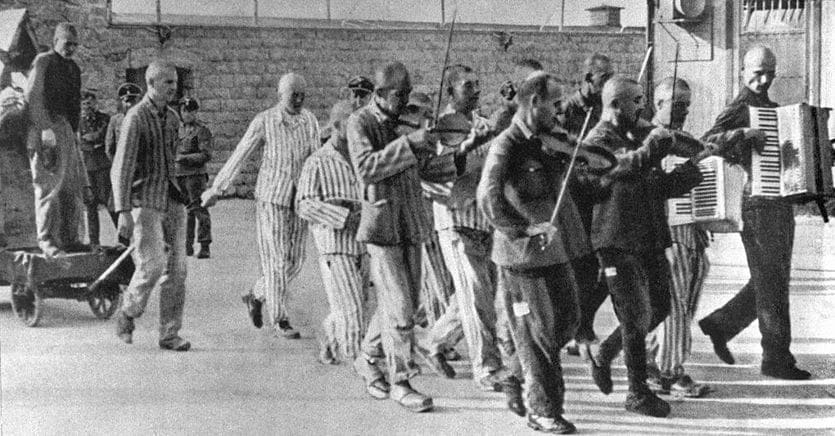After World War II, documents of various kinds re-emerged from the underground of the Nazi ghetto in Warsaw, dismantled in 1943, hidden by its inhabitants for future reference: decrees of the German authorities, minutes of the Jewish council, clandestine newspapers, food stamps, concert posters and shows organized inside it starting from 1940. The same happened, to give another example, in the extermination camp of Birkenau, whose land, mixed with human ashes, returned both the few documents that the prisoners had managed to bring with himself from the ghettos some diaries that the members of the Sonderkommando had begun to keep after the deportation.
First testimonies of the Shoah
These are the first testimonies of the Shoah, memories from beyond the grave that herald what the historian Annette Wieviorka would have called “the era of the witness”.
But in addition to the last words of the victims and, later on, the pressing voices of the survivors, music resurfaced from the concentration camp universe. A lot of music: about eight thousand scores. Or at least this is the still provisional number of those collected by the pianist and composer Francesco Lotoro, who has been involved for over thirty years in a project of recovery, archiving and performance of music written in concentration camps and in other places of imprisonment between the 1933 and 1953, that is, from Hitler’s rise to power to Stalin’s death.
The wide periodization – symbolically suggestive but historiographically problematic – is not enough to explain such a large number of scores. According to Lotoro, in fact, the real reason for this abundance would be inherent in the function assumed by music in a context of imprisonment. That, that is, of an act of resistance. Hence the clear prevalence of marches and songs, sung to mark the forced labor, the most famous of which is the Moor soldiers song. Written by Johann Esser with Wolfgang Langhoff and set to music by Rudi Goguel in the Börgermoor concentration camp in 1933 (“we are the swamp soldiers / with the spade we march in the mud”) it was adapted and translated into many languages, becoming a protest song in a few years. spread all over the world.

Stimulus to creation
For some musicians the condition of imprisonment even represented a stimulus to creation. In a text sketched a few months before ending up in a gas chamber (Goethe und Ghetto, 1944), the Austrian composer Viktor Ullmann came to define the Theresienstadt camp as a “school of form”, which enriched and improved his musical production. It was there that he composed the opera The Emperor of Atlantis, one of the peaks of concentrationary music together with the Eighth Symphony by the Czech Erwin Schulhoff (composed in Wülzburg in 1942) and the Sonata for violin and piano by the Polish Hermann Gürtler (written in Bolzano in 1944).
